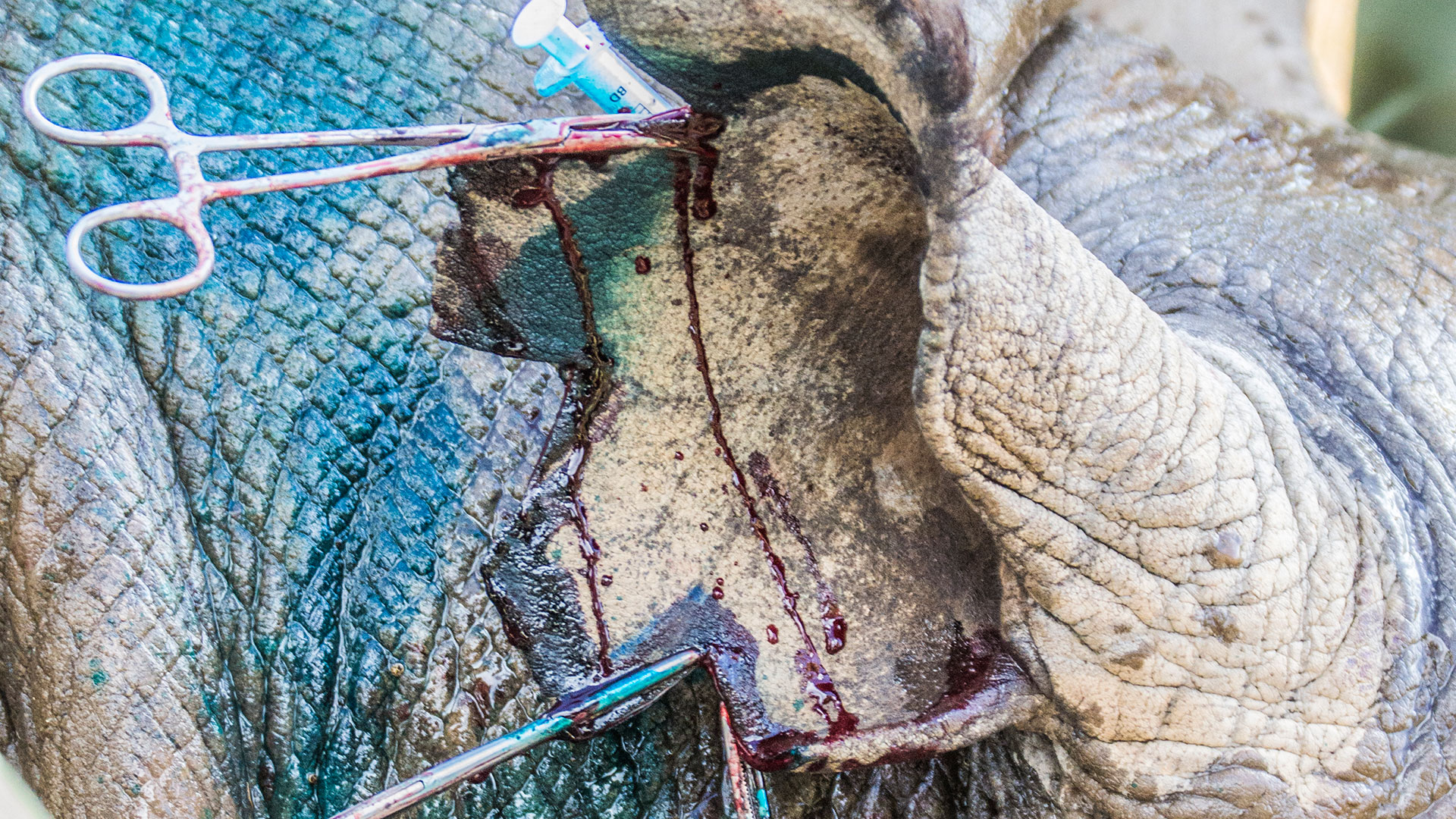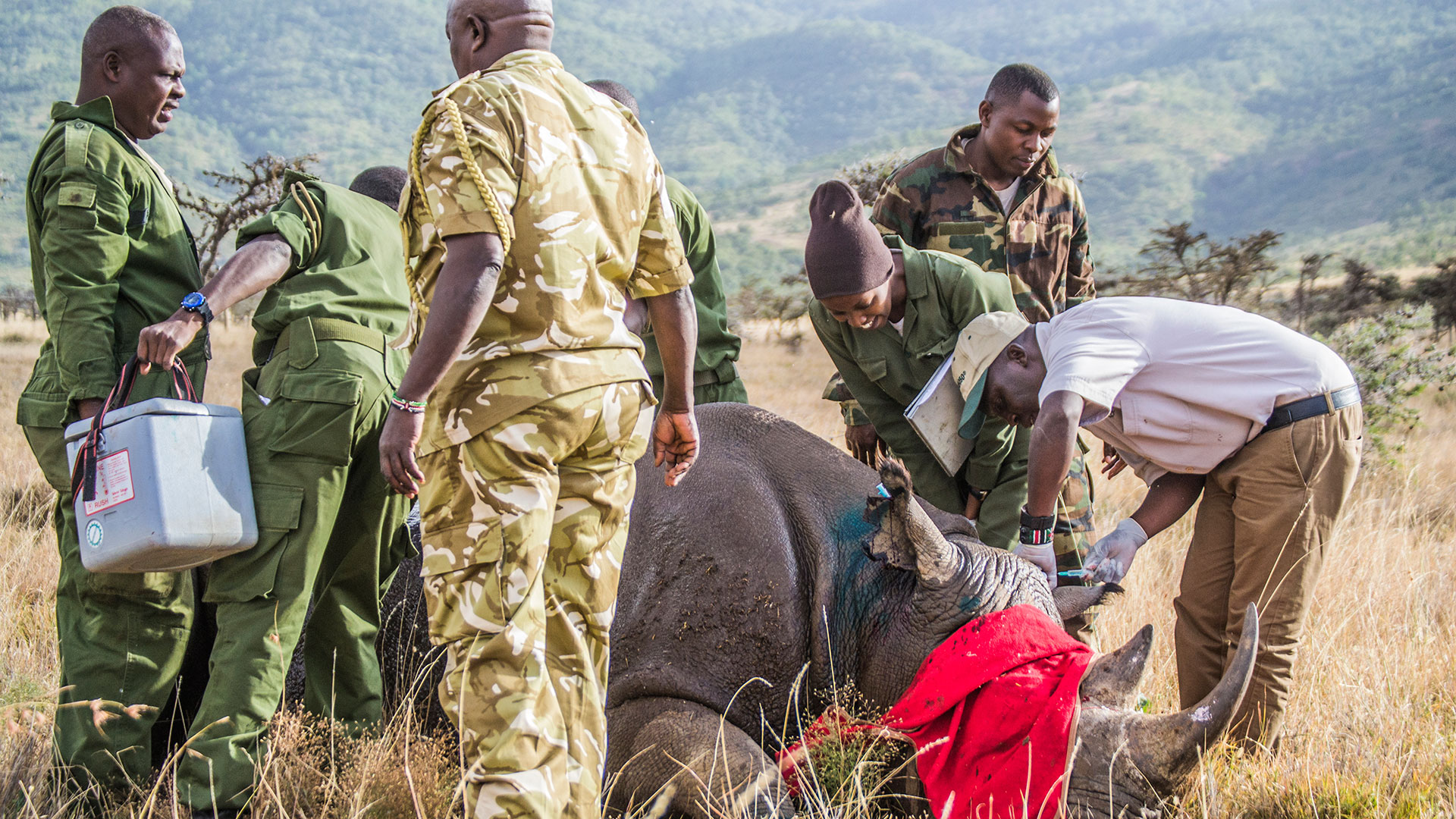Elewana Lewa Safari Camp Guests witness Rhino Notching first hand
On the 1st February, Lewa Wildlife Conservancy & Kenya Wildlife Service teamed up for a rhino notching exercise. The aim being to provide each Rhino with an identity by creating a unique notch pattern on the ears, which will enable rangers to identify individual animals during their anti-poaching patrols, determine when an animal goes missing, and also ensure that accurate and consistent data is recorded for each rhino.

 The team embarked on a massive exercise to ear notch at least 20 rhinos over 6 days on the Lewa-Borana Landscape, with Subira, a 3.7-year-old black rhino being the first to get her notch pattern. Three rhinos were notched on the first day with the rest following over the remaining days.
The team embarked on a massive exercise to ear notch at least 20 rhinos over 6 days on the Lewa-Borana Landscape, with Subira, a 3.7-year-old black rhino being the first to get her notch pattern. Three rhinos were notched on the first day with the rest following over the remaining days.
The guests enjoyed the experience and certainly learned a great deal when it comes to the conservation work that goes on at Lewa Wildlife Conservancy and the daily fight to protect these incredible animals.
Lewa Conservancy opened a new Joint Operations Centre, which serves as the communications hub to the entire area embracing Borana to the west and all the Northern Rangeland Trust Conservancies. This covers an area with a radius of about 300km. The launch of the revolutionary new Joint Operations Centre enables operators to see exactly what is happening across the vast landscapes of Lewa, NRT and adjacent Borana, as it occurs.
Vulcan, the high-tech and philanthropy-focused company founded by Paul G. Allen, created the new system specifically to help combat poaching and enhance wildlife management on a large scale across a vast area. Known as the Domain Awareness System (DAS), the programme integrates data and technology to provide a single picture that alerts security and anti-poaching teams to threats instantaneously and supports real-time tactical decision-making.
Through the protection and management of wildlife species, the initiation and support of community conservation and development programmes, and through educating the local youth in the value of wildlife, Lewa has reversed a decline in several endangered species, most famously rhino.
Since 1984 its rhino population has grown steadily, not only restoring local numbers but enabling the reintroduction of black rhinos into regions where they had long been extinct. The Conservancy currently holds over 10% of Kenya’s black and 15% of Kenya’s white rhino population and for three years no rhinos have been poached in the conservancy.

